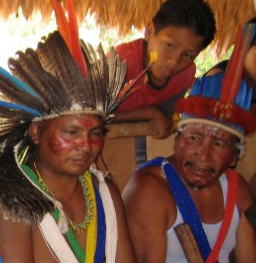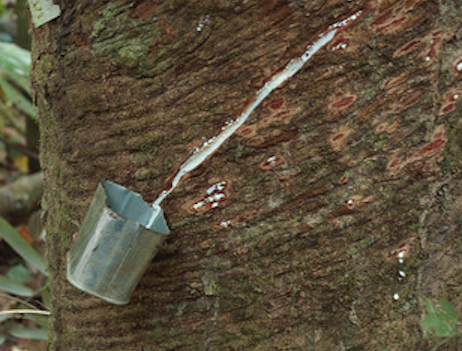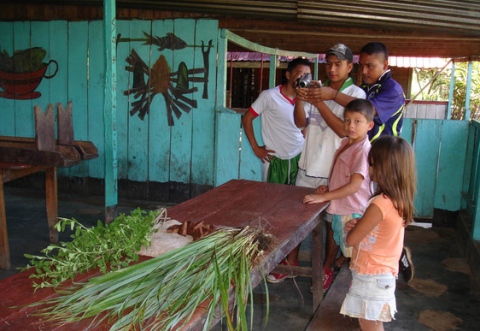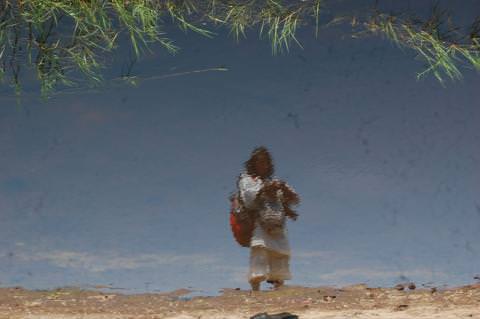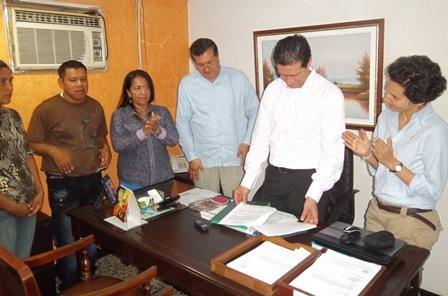Posts Tagged ‘news’
Congress of Communities Convenes Indigenous Representatives of Caquetá
Indigenous representatives of the Caquetá department are participating in the Congress of Indigenous Communities, an activity that is part of a project to strengthen the indigenous organizations of Caquetá, executed by the NGO Amazon Conservation Team (ACT).
Read MoreTechnology Can Help Save the Environment
It is hard for me to believe that I will have lived on planet Earth for 80 years as of this Thursday. I was born on April 3, 1934 and the world has changed in almost all ways possible. I write this article from a laptop computer while flying in an airplane to Nebraska, where I visit every year to see the migration of the majestic Sandhill cranes…
Read MoreA foot injury? Give me your machete!
“What’s wrong with your foot?” asked the medicine man as I ducked into his grass hut to escape the tropical downpour. He could see that I walked with a slight limp. Like many an aging athlete, I had injured myself while training for a hike. I knew I had to condition myself to be able to walk 50 miles carrying a backpack at 9,000 feet.
Read MoreNASCAR, the NBA, Rubber and the Rainforest
As you watch the NBA playoffs this spring, impress your friends with this fact: the idea for those Nikes worn by LeBron James and Kevin Durant was actually born in the rainforests of the northeast Amazon.
In 1775, French botanist Fusee Aublet observed local Indians there coating their feet with rubber tree sap and holding their feet over the fire, creating the first custom-made athletic shoes.
The Medicine Man and the Microchip
Diverse tropical ecosystems like rainforests and coral reefs may harbor microorganisms able to produce compounds that — when made less toxic, more effective or used as inspiration to develop new medicines — may give us new antibiotics, new treatments for cancer and new treatments for stress. Western medicine, in spite of the superlative nature of its success, does have its holes.
Read MoreWomen Reclaim Cultural Knowledge in Northwestern Amazonia
An hour before dawn, we landed at a small airstrip deep in the mountains of the Colombian Amazon. This remote forest — ringing with the sounds of frogs, monkeys and parrots –seemed surreal, as did my reason for visiting. Over the next five days, I would photograph the annual conference of the region’s female indigenous healers.
Read MoreRevolutionizing Education in the Colombian Rainforest
While top-of-the-line outdoor gear and insect repellents work well in the Northern California backcountry, they’re next to worthless in the Colombian jungle. This was my first lesson traveling from the West Coast to a region with 100-degree temperatures and 90 percent humidity, where bugs feed on any millimeter of exposed of skin and the humid air dissolved my malaria pills into a sludgy mess before I could take them.
Read MoreColombia establishes giant rainforest park
Next week the Colombian government will officially double the size of its largest national park, reports El Espectador.
Chiribiquete National Park in southern Colombia will expand from 12,990 square kilometers to 27,808 square kilometers, making it one of the biggest protected areas in the Amazon. The expansion will include areas thought to be inhabited by two “uncontacted” or voluntarily isolated tribes. These areas were potentially at risk from oil exploration and mining.
The Kogis Return to the Ocean
Five centuries ago, before the Spanish made their way to the Caribbean on their route to the Indies, a major portion of the communities of the Sierra Nevada de Santa Marta lived along the ocean, undertook long journeys in search of fish, and gathered caracuchas, similar to a snail, which they consumed crushed and mixed with coca leaves in order to improve their thinking and communication.
“The sea was our mother”: so says the creation myth of the Kogi.
ACT Helps Establish Indigenous Leadership Fund
An agreement for 1.3 billion pesos to be disbursed from a special government royalty collection fund was signed yesterday between the Governor of Caquetá and indigenous communities in the department.
The signing of this agreement is intended to support the organizational strengthening of at least 12 indigenous groups in the department, a process that will be led by the communities themselves, as related by Wairanina Jacanamejoy Mutumbajoy, coordinator of the Departmental Indigenous Council.




